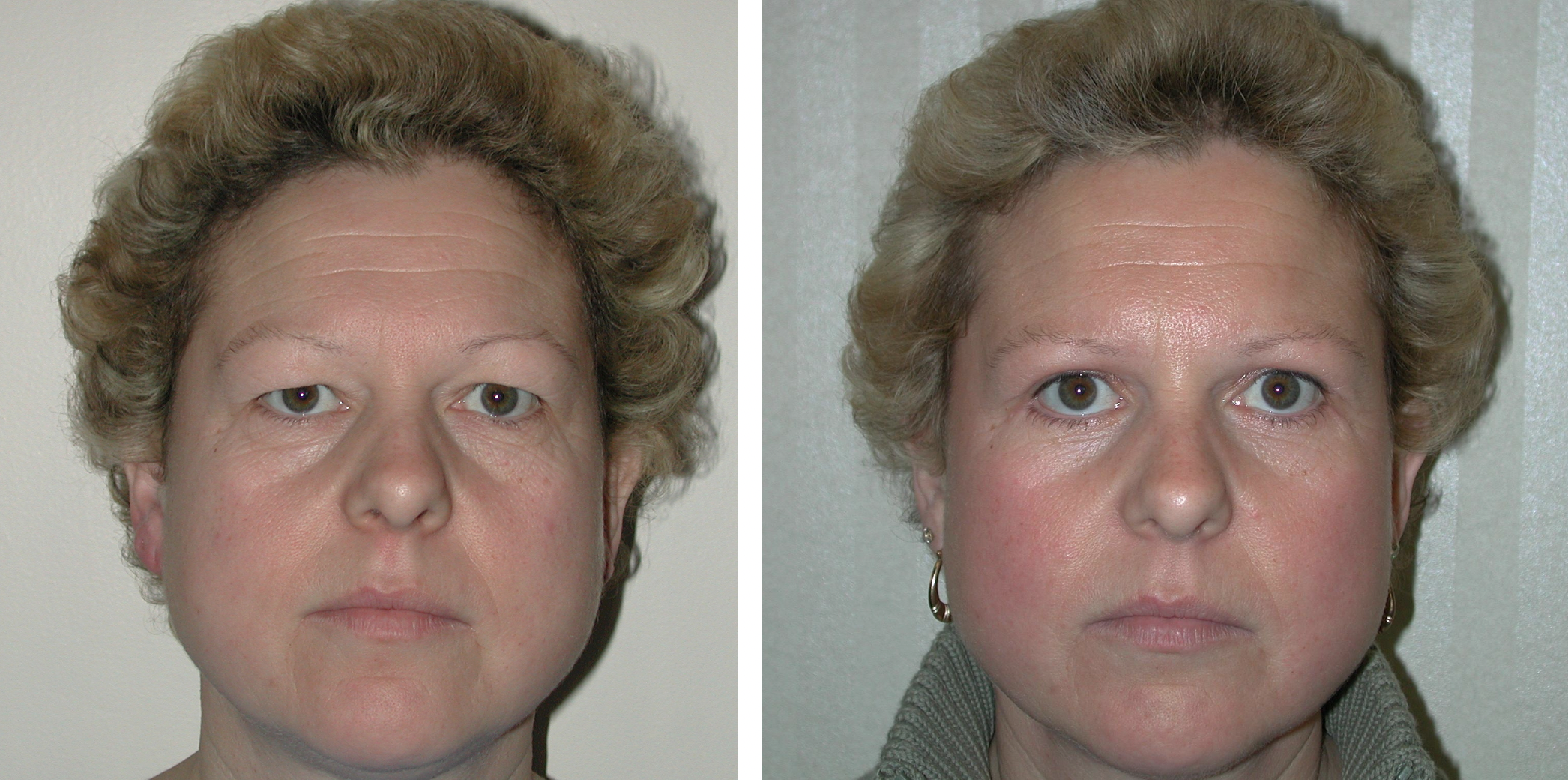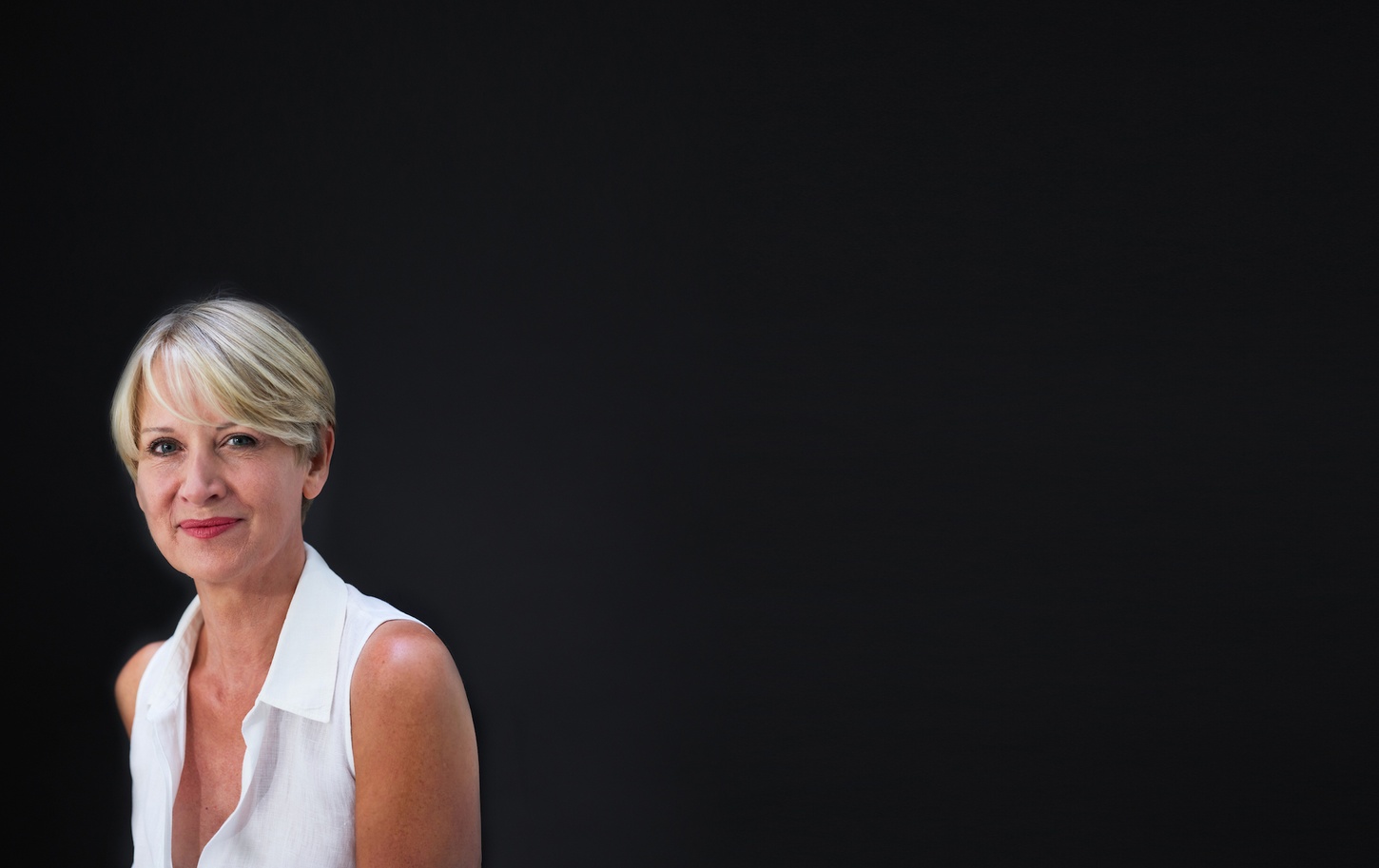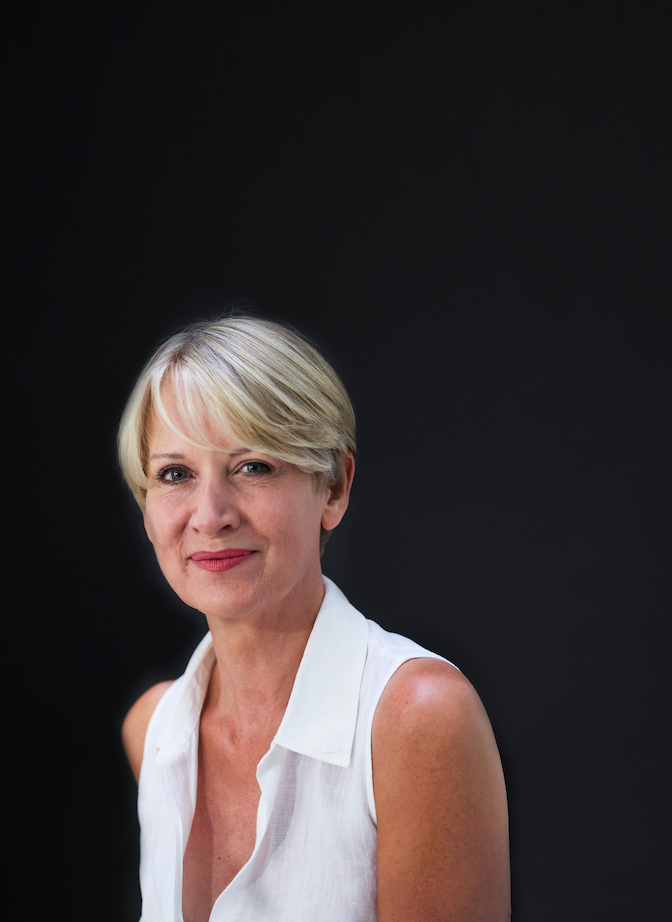The eyebrow frames the eye, and its position can convey happiness and surprise or sadness and tiredness. Ageing within the upper third of the face causes horizontal creases in the forehead and drooping of the eyebrows. Repositioning the brow and forehead gives an open appearance and fresh look to the upper third of the face which are characteristics of youth and beauty. The procedure for rejuvenation of the forehead and eyebrows is known as a brow lift. It aims to compensate for the drop in brow position that occurs with age although this can take place at a relatively young age in certain individuals with a familial tendency. If the eyebrows drop it also creates the impression that the upper eyelid has excess skin as it all gathers between the eyebrow and the upper lid.
The operation of Browlift is performed by Mr Grover using the Endoscopic (“keyhole”) technique. This utilises a surgical telescope (endoscope) to lift the brow and forehead without the need for visible scars on the forehead itself. The incisions are short (12-15 mm) and kept within the scalp, away from the hairline in order to keep them well hidden. The operation of Endoscopic Browlift is often performed in conjunction with surgery to the eyelids for removal of loose skin or bags (Blepharoplasty).
INTRODUCTION

Before and after photos of patient operated on by Rajiv Grover
Contents:
What happens at the consultation?
Rajiv will provide a friendly and honest opinion regarding your suitability for Brow surgery. The consultation begins with carefully listening to your concerns, what you hope to achieve and understanding the reasons behind seeking his help. After checking your medical history and examining your eyes along with studying photographs of you when you were younger, he will provide information on what can be achieved, explaining the likely outcome and possible risks. Together you will be able to map out a plan after which he always encourages you to take time and think carefully before you make any decisions, perhaps visiting for a second consultation if that is helpful.
Purpose of Surgery
Rajiv only performs facial surgery specifically for the Protection, Maintenance, and Restoration of health. After a full medical consultation, a diagnosis and treatment program are agreed. All subsequent surgery and after-care is personally performed by Rajiv. The outcome of the treatment program is assessed at your follow-up appointments over six months.
How do I prepare for surgery?
It is important to avoid taking any Aspirin or products containing Aspirin for 2 weeks either side of the operation since Aspirin thins the blood and has an adverse effect on bruising. The same is true for non-steroidal anti-inflammatory drugs (such as Voltarol, Brufen and Nurofen) as well as vitamins, fish oils and supplements. If you are a smoker it is imperative to stop for a month before surgery and a month afterwards so as not to restrict the circulation to the skin which is vital for healing. While making preparations, please arrange for someone to collect you after your surgery and to help you out for a few days at home.
Where will my surgery be performed?
The surgery is usually performed at The London Clinic or the King Edward VII Hospital in central London where Rajiv Grover works as a Consultant Plastic Surgeon. You will usually be admitted on the day of surgery and stay overnight.
What type of anaesthetic will be used?
Endoscopic browlift is performed under a light general anaesthetic, so you’ll sleep through the entire operation.
What does the operation involve?
After the anaesthetic has been administered and you are asleep Mr Grover prepares your hair for surgery. He does not shave any hair as it can easily be parted with hair gel and ribbon ties. Mr Grover infiltrates the forehead with a salt solution containing local anaesthetic (tumescent infiltration) as this reduces swelling and bruising after surgery. The incisions are then made in the scalp and are each 12-15 mm long. As they are kept behind the hair line there will be no visible scars on your forehead. The tissues of the forehead are then lifted and repositioned higher. Mr Grover is always careful to judge the position of your brow in order to avoid creating a startled appearance after surgery. The skin is then supported in the new position and the wounds are stitched with dissolving sutures.
How long will the surgery take?
Endoscopic browlift usually takes about an hour depending on the extent of the surgery.
Is it painful?
For the first few days it is common to experience some headache in the forehead region after browlifting as the nerves to the scalp in this area are stretched. Rajiv has developed techniques of bathing the tissues in local anaesthetic before completing the operation to minimise this headache but you will be given gentle painkillers after surgery to soothe this as a routine precaution.
What can I expect after the Surgery?
Most people only have mild swelling and bruising following browlift, however this does vary between individuals and depending on whether any eyelid surgery was performed at the same time. Whilst in hospital the nurses may apply cool soothing pads to your eyes in order to minimise this swelling further. In addition, it is advised to rest for the first few days with your head elevated on 2-3 pillows as this also helps. During the first week you should avoid straining and bending down as this tends to increase the swelling. Dr Grover will arrange to see you after about 7-10 days to check all is well however as the stitches are dissolving and hidden in the scalp so there will be no sutures to remove.
Most patients can return to work after about 12 to 14 days although it will probably take at least 3-4 weeks before you would be ready for a major social event. To aid recovery strenuous sport should be avoided for 3-4 weeks. It is better to avoid wearing contact lenses for at least two weeks after browlifting and in some individuals this is best avoided for about a month if combined with blepharoplasty.
What are the scars like?
The Endoscopic Browlift is performed by Mr Grover using a “keyhole” technique so all the small incisions are kept hidden in the scalp.
What are the risks?
All surgical procedures carry risk and Rajiv will do everything possible to minimise this. The process starts at the consultation with selection of the best procedure for each individual patient, advice on pre-operative preparation, careful surgical technique, and personal post-operative care. Rajiv has a strong interest in improving safety and established the UK National Audit of Cosmetic Surgery & Safety at the Royal College of Surgeons. He has submitted audited figures of procedures and complications each year to The British Association of Aesthetic Plastic Surgeons (BAAPS) since 2004 when this database began. His complication rates for Browlifting are in the lowest 1% centile of all surgeons in the United Kingdom. Rajiv’s personal complication rates audited through The BAAPS over the past two decades are quoted below. This list is indicative of the more common complications but is not meant to be exhaustive.
- Bleeding beneath the skin from small capillaries can cause excessive bruising to collect (haematoma) which may require surgical treatment. The most common time for it to arise is within the first twelve hours after surgery when you will be in hospital. It normally does not influence the ultimate outcome of the surgery. In his 18 year figures audited for The BAAPS, Rajiv did not have a single patient requiring surgical treatment for hematoma following Browlifting in over 500 consecutive cases. Of course, this complication can still happen, but with care it can certainly be minimised.
- Infection is uncommon after Browlift surgery. Prophylactic antibiotics are routinely given during the operation and for 5 days after to reduce the risk. In his 16 year figures audited for The BAAPS, Rajiv did not have a single patient requiring intravenous antibiotic treatment for infection following Browlifting in over 500 consecutive cases.
- It is common to have a headache for the first few days following a browlift due to stretching of the nerves to the scalp. Rajiv has developed techniques of bathing the tissues in local anaesthetic before completing the operation to minimise this headache but you will be given gentle painkillers after surgery to soothe this as a routine precaution.
- Some numbness over the forehead and scalp is normal due to stretching of the nerves and this usually recovers although it may take several months to return to normal which it does in over 97% of patients.
- A small amount of hair loss in the region of the incisions is very occasionally seen although this usually recovers over a period of 3-6 months.
Summary
| Procedure time | 60 minutes |
| General / Local anaesthetic | General |
| No. nights in hospital | 1 night |
| Time off work | 7-10 days |
| Sensitivity period | 2-3 weeks |
| Back to normality / sports | 2-4 weeks |
Browlift is a common Plastic Surgery procedure for rejuvenating the forehead and lifting the brows to give an open appearance and fresh look to the upper third of the face. In addition to the physical effects of freshening your eyes, Browlift improves the appearance of tiredness and produces a result that last on average for 8-10 years. Please remember the procedure can never halt the ageing process, the clock can be turned back but no surgeon can stop it ticking.

